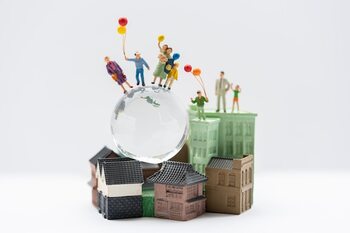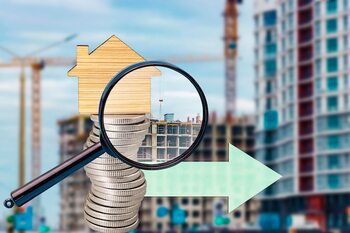The footprint of art in the added value of your property

The appreciation of art in the urban environment not only enriches our cultural life but can also be a determining factor in the value of your property. In this article, we will explore how the integration of artistic works in your neighborhood can elevate the value of your home, generating additional appeal for potential buyers and renters. Discover how the footprint of art transforms spaces and contributes to a more solid investment in the real estate market.
The influence of urban art on the perception of neighborhoods.
Urban art has emerged as a powerful catalyst in the transformation of neighborhoods, redefining not only their aesthetics but also their identity. Vibrant murals and artistic installations can act as magnets that attract both residents and visitors, generating a dynamic and appealing atmosphere. This phenomenon not only beautifies public space but also fosters a sense of community, where inhabitants feel proud of their surroundings and actively engage in their preservation and improvement. The positive perception generated by urban art can be key to revitalizing areas that were previously considered disadvantaged, leading them towards a path of sustainable development and cultural appreciation.
In addition to the emotional impact that urban art can have on the community, it also directly influences real estate appreciation. Studies show that neighborhoods with a strong artistic presence tend to experience a significant increase in property values. This is due to multiple factors: attractive visual aesthetics, increased foot traffic, and the creation of more pleasant public spaces are just a few examples. When potential buyers and renters are looking for a new property, they often place a high value on those places that not only offer comfortable housing but also provide rich and accessible cultural experiences. Thus, the integration of urban art is not just an aesthetic issue; it is a smart strategy for those looking to maximize the value of their real estate investment.
2. How galleries and cultural spaces increase interest in an area
Cultural galleries and spaces act as catalysts in the development of a community, transforming urban areas into vibrant destinations. By offering art exhibitions, workshops, and cultural events, these spaces not only foster creativity and social interaction but also attract visitors and residents seeking enriching experiences. This influx of people creates a dynamic environment that can increase real estate demand in the area, directly impacting the appreciation of surrounding properties. The more active and recognized a gallery or cultural space is, the greater its positive impact on the environment. Furthermore, the presence of public art and cultural activities translates into a sense of community identity and belonging. When residents feel connected to their neighborhood due to the existing cultural offerings, they are more likely to want to settle in the long term. This means that both potential buyers and renters will value not only the physical characteristics of the home but also the quality of life that the area offers. In this context, cultural spaces contribute to creating an ecosystem where art not only beautifies the urban landscape but also becomes a fundamental pillar for increasing the economic value of local properties.
3. The role of festivals and artistic events in real estate valuation
Art festivals and events play a crucial role in real estate valuation by temporarily transforming urban space into a cultural hotspot. These events not only celebrate local creativity and talent but also promote social interaction and a sense of community. When a neighborhood hosts art fairs, exhibitions, or outdoor concerts, a vibrant atmosphere is generated that can attract the attention of visitors and potential buyers. This influx of people creates a positive perception of the area, elevating its profile as a desirable place to live and invest.
Additionally, artistic festivals can have a lasting effect on the neighborhood's image, consolidating its reputation as a dynamic cultural hub. Over time, this valuation translates into a significant increase in local property prices. Real estate developers and investors often recognize this phenomenon and seek to acquire land or properties in areas with an active artistic agenda. In this way, not only is local economic growth promoted, but it also ensures that investments made in real estate are more profitable in the long term, thanks to the cultural appeal that these events bring to the community.
4. Strategic investments: Works of art as tangible assets
Artworks are not only creative expressions but have also become tangible assets that can add significant value to a property. Investing in artistic pieces, whether sculptures, paintings, or murals, can transform a property into a unique and attractive space for buyers. The presence of well-chosen art not only beautifies the environment but also generates a sense of identity and community. By incorporating notable works in common areas, such as parks or neighborhood squares, an atmosphere is created that attracts people interested in living in a place where culture is present and alive. This can result in higher demand for surrounding properties and, consequently, increase their value.
In addition to its aesthetic and emotional impact, strategic investments in art can offer long-term financial benefits. Works by emerging or established artists tend to appreciate in value over time, becoming a profitable way to diversify your real estate portfolio. In this sense, acquiring art can be seen not only as an aesthetic purchase but also as a smart financial decision. When the opportunity arises to sell your property, having a well-curated art collection can make it stand out in today's competitive market and attract more attractive offers. Thus, smart investors are beginning to consider art not only as decoration but as a fundamental component to maximize the appreciation of their properties.
5. Owner testimonials: Experiences that reflect the impact of art
Testimonials from owners who have incorporated art into their surroundings reveal a deep connection between aesthetics and the perceived value of their properties. Many of them highlight how the presence of vibrant murals, iconic sculptures, or artistic installations has transformed not only the appearance of their homes but also the way they are perceived by those who visit. These owners comment that by integrating art into their neighborhood, they have managed to create a stronger sense of community, attracting people interested in a lifestyle enriched by culture and creativity. This not only enhances their daily experience but also translates into higher demand when they decide to sell or rent.
Additionally, several homeowners have observed a direct impact on the resale value of their properties. Those who have lived in areas with active artistic initiatives report that their homes sell for significantly higher prices compared to similar properties in less inspired areas. Current buyers are looking for more than just a physical structure; they desire a home situated in a vibrant and culturally enriching environment. Therefore, these testimonials highlight how art is not just decoration, but an effective strategy to increase value and attract a broader and more interested audience.
6. Local Art vs. International Art: What Attracts Buyers More?
The debate between local art and international art is a recurring topic in the realm of collecting and interior decoration, especially when it comes to real estate. Local art often resonates more with buyers who value authenticity and a cultural connection to their community. These works reflect the history, traditions, and spirit of the place, which can create a stronger emotional bond with the residents. By incorporating local art into your home or neighborhood, not only is the space beautified, but local artists are also supported, which can be an additional attraction for those looking to invest in a property that respects and enhances its surroundings. On the other hand, international art tends to attract buyers seeking exclusivity and prestige. Works by renowned artists or contemporary styles can instantly elevate the perception of a property as a sophisticated retreat. This type of art can position your home at a higher level within the real estate market, attracting investors willing to pay more for decorative elements that are seen as status symbols. The choice between both types of art can significantly influence how the value of a property is perceived; thus, knowing how to balance both approaches can be key to maximizing the appreciation of your investment.
7. Strategies to incorporate art into your property without breaking the bank
Incorporating art into your property doesn't have to involve a million-dollar investment. There are various accessible strategies that can offer an artistic touch without compromising your finances. One option is to participate in local art fairs or emerging artist markets, where you can find original works at affordable prices. Additionally, consider the possibility of acquiring reproductions of famous works or prints from contemporary artists, which can add color and personality to your spaces without the need to spend large sums. You can also explore the use of murals painted by local artists, which not only beautifies your home but also supports the creative community.
Another effective strategy is collaborative art; community art installations tend to be more affordable and allow multiple artists to come together to create a unique and attractive space. Don't forget the option of digital art; canvas prints or posters can be an economical way to add style and modernity to your walls. Finally, transforming everyday objects into decorative pieces can create an artistic atmosphere without the need for high expenses. With a little creativity and local resources, you can make art an integral part of your home, increasing its appeal and value in the real estate market at the same time.



